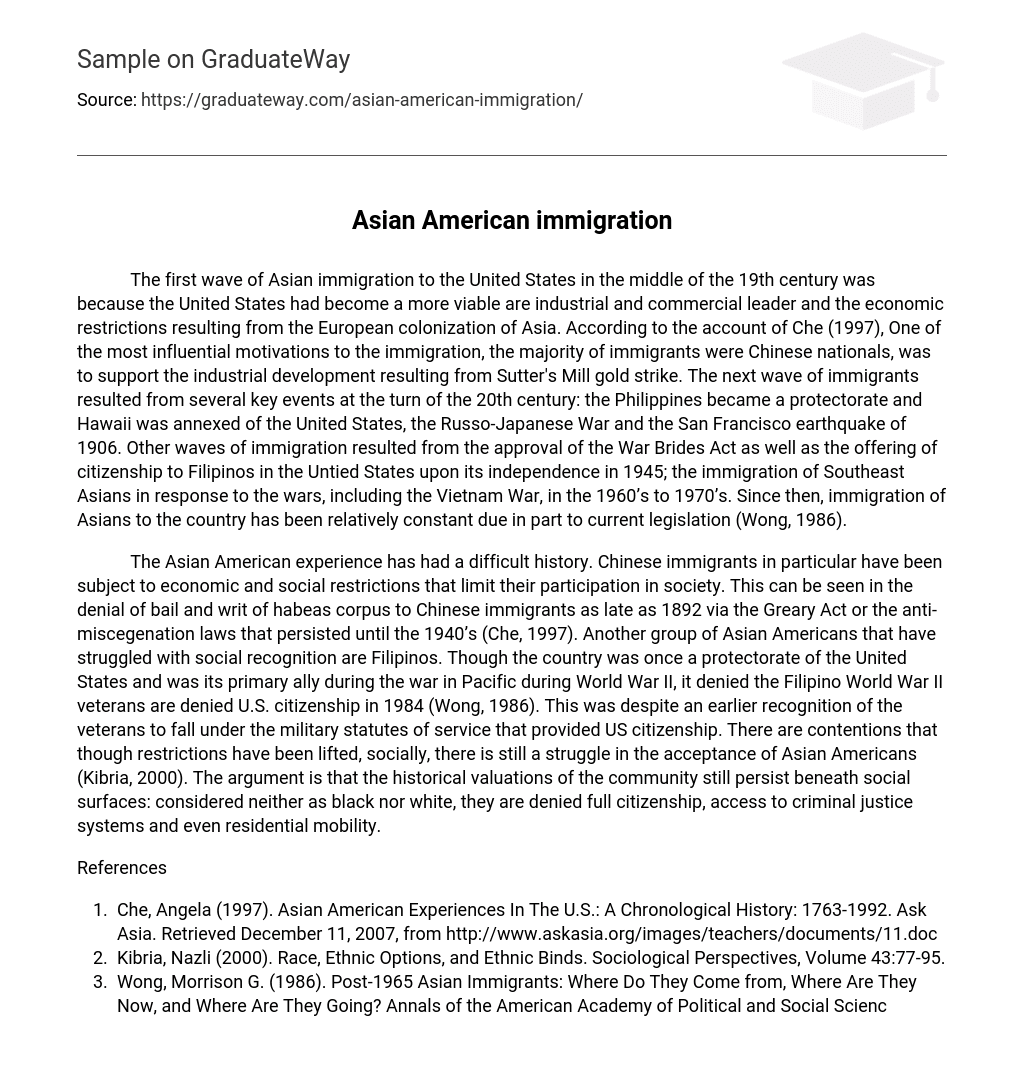The first wave of Asian immigration to the United States in the middle of the 19th century was because the United States had become a more viable are industrial and commercial leader and the economic restrictions resulting from the European colonization of Asia. According to the account of Che (1997), One of the most influential motivations to the immigration, the majority of immigrants were Chinese nationals, was to support the industrial development resulting from Sutter’s Mill gold strike. The next wave of immigrants resulted from several key events at the turn of the 20th century: the Philippines became a protectorate and Hawaii was annexed of the United States, the Russo-Japanese War and the San Francisco earthquake of 1906. Other waves of immigration resulted from the approval of the War Brides Act as well as the offering of citizenship to Filipinos in the Untied States upon its independence in 1945; the immigration of Southeast Asians in response to the wars, including the Vietnam War, in the 1960’s to 1970’s. Since then, immigration of Asians to the country has been relatively constant due in part to current legislation (Wong, 1986).
The Asian American experience has had a difficult history. Chinese immigrants in particular have been subject to economic and social restrictions that limit their participation in society. This can be seen in the denial of bail and writ of habeas corpus to Chinese immigrants as late as 1892 via the Greary Act or the anti-miscegenation laws that persisted until the 1940’s (Che, 1997). Another group of Asian Americans that have struggled with social recognition are Filipinos. Though the country was once a protectorate of the United States and was its primary ally during the war in Pacific during World War II, it denied the Filipino World War II veterans are denied U.S. citizenship in 1984 (Wong, 1986). This was despite an earlier recognition of the veterans to fall under the military statutes of service that provided US citizenship. There are contentions that though restrictions have been lifted, socially, there is still a struggle in the acceptance of Asian Americans (Kibria, 2000). The argument is that the historical valuations of the community still persist beneath social surfaces: considered neither as black nor white, they are denied full citizenship, access to criminal justice systems and even residential mobility.
References
- Che, Angela (1997). Asian American Experiences In The U.S.: A Chronological History: 1763-1992. Ask Asia. Retrieved December 11, 2007, from http://www.askasia.org/images/teachers/documents/11.doc
- Kibria, Nazli (2000). Race, Ethnic Options, and Ethnic Binds. Sociological Perspectives, Volume 43:77-95.
- Wong, Morrison G. (1986). Post-1965 Asian Immigrants: Where Do They Come from, Where Are They Now, and Where Are They Going? Annals of the American Academy of Political and Social Science, Volume 487: 150-168





